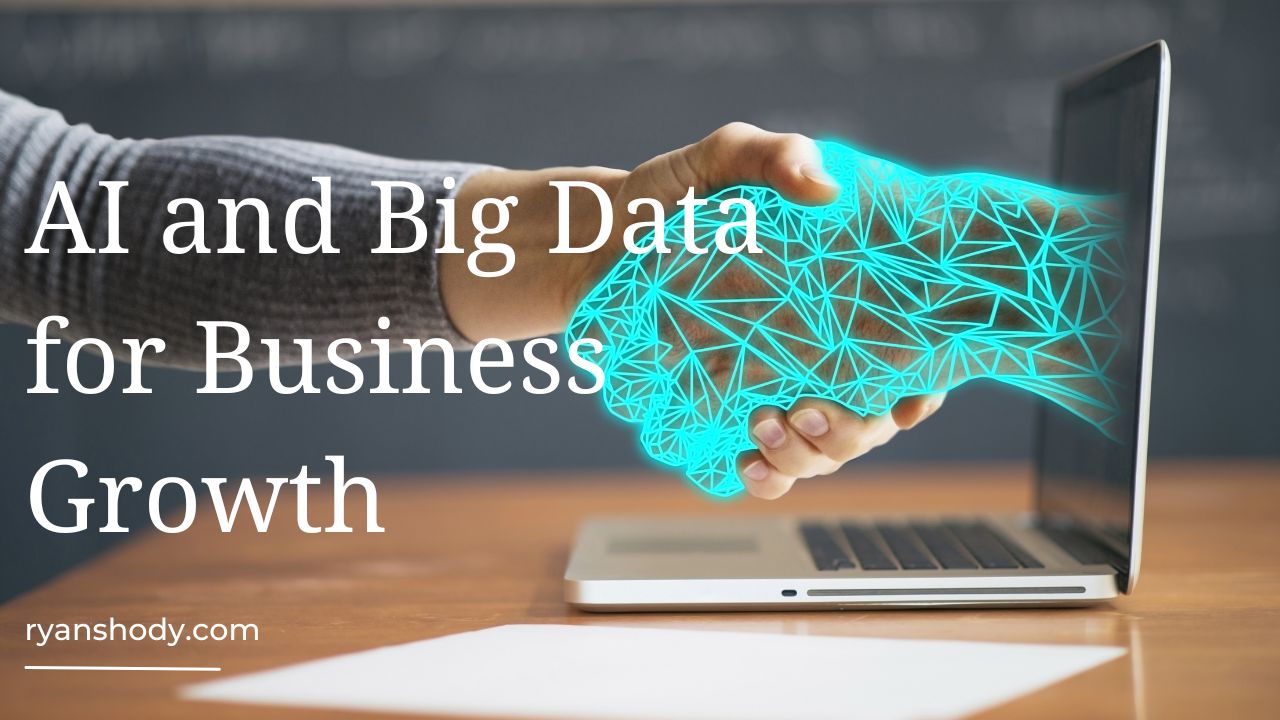In the fast-paced business landscape of 2025, the role of Artificial Intelligence (AI) and Big Data for business growth has become not just beneficial but essential.
These technologies are at the forefront of driving innovation, enhancing operational efficiency, and providing unparalleled customer insights.

By harnessing the power of AI and Big Data, businesses are unlocking new opportunities, making more informed decisions, and staying ahead in their respective industries.
Ease of Use : AI and Big Data for Business Growth
User Interface and Experience
One of the most significant strides in technology, particularly AI and Big Data for business growth, has been in making complex systems more accessible to a wider audience.
Modern platforms are designed with user-friendly interfaces, allowing even those with minimal technical expertise to leverage powerful analytics and AI-driven insights.
This democratization of technology enables businesses of all sizes to benefit from these advancements, not just the tech giants.
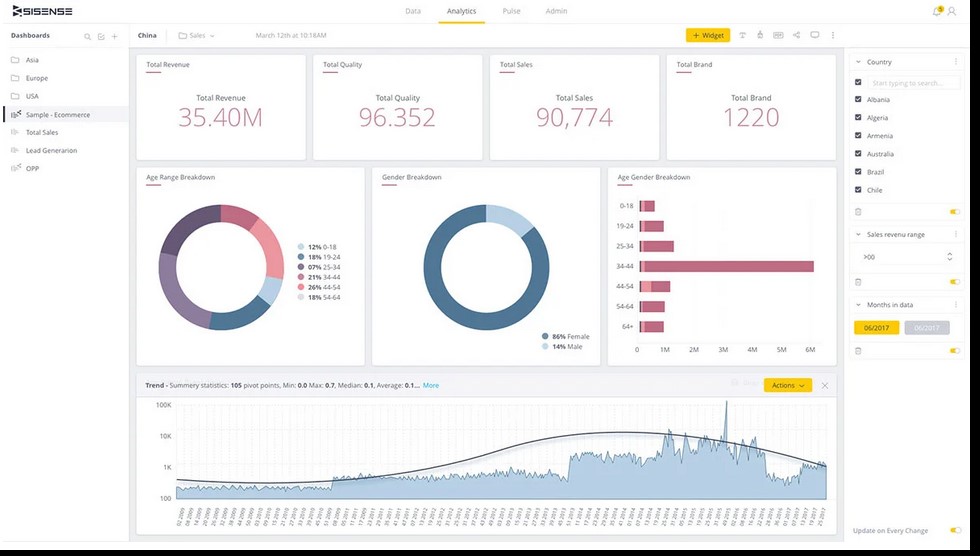
Learning Curve for New Users
Despite the advanced capabilities of AI and Big Data tools, the learning curve for new users has been significantly flattened in 2025.
Thanks to intuitive design, interactive tutorials, and AI-guided assistance, newcomers can quickly become proficient in utilizing these tools for business growth.
Education and training resources are more abundant and accessible, making it easier than ever for businesses to upskill their teams and capitalize on the benefits of AI and Big Data.
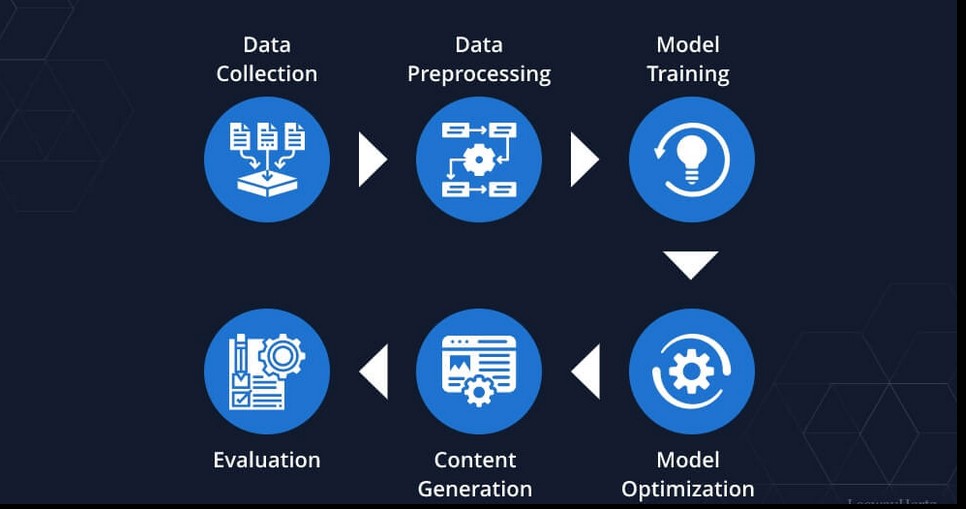
AI and Big Data for Business Growth
1. AI Development Platforms
- Google AI Platform – A suite for machine learning developers and data scientists to build and run AI models.
- Azure Machine Learning – Microsoft’s cloud platform for training, deploying, and managing machine learning models.
- IBM Watson – Offers a variety of AI services and tools for businesses, including natural language processing and data analysis.
- Amazon SageMaker – A fully managed service that provides every developer and data scientist with the ability to build, train, and deploy machine learning models quickly.
- TensorFlow – An open-source platform for machine learning created by Google, suitable for both beginners and experts.
2. Big Data Processing
- Apache Hadoop – A framework that allows for the distributed processing of large data sets across clusters of computers.
- Apache Spark – An open-source, distributed computing system that provides an interface for programming entire clusters with implicit data parallelism and fault tolerance.
- Apache Flink – A framework and distributed processing engine for stateful computations over unbounded and bounded data streams.
- Apache Kafka – A distributed streaming platform that can publish, subscribe to, store, and process streams of records in real-time.
- Databricks – A unified data analytics platform, built on Apache Spark, that accelerates innovation by unifying data science, engineering, and business.
3. AI Model Deployment Platforms
- TensorFlow Serving – A flexible, high-performance serving system for machine learning models, designed for production environments.
- TorchServe – A flexible and easy to use tool for serving PyTorch models.
- ONNX Runtime – A cross-platform, high-performance scoring engine for Open Neural Network Exchange (ONNX) models.
- Triton Inference Server – Supports AI model serving for any framework, any language, and any cloud, on-premises, or at the edge.
- Kubeflow – An open-source project dedicated to making deployments of machine learning (ML) workflows on Kubernetes simple, portable, and scalable.
4. Data Visualization Tools
- Tableau – A powerful and fastest-growing data visualization tool used in the Business Intelligence Industry.
- Power BI – A collection of software services, apps, and connectors that work together to turn your unrelated sources of data into coherent, visually immersive, and interactive insights.
- QlikView – A self-service Business Intelligence, data visualization, and data analytics tool.
- Apache Superset – An open-source data visualization and data exploration platform.
- Looker – A business intelligence software and big data analytics platform that helps you explore, analyze, and share real-time business analytics.
5. Data Integration Tools
- Apache Nifi – An easy-to-use, powerful, and reliable system to process and distribute data. It enables automation of data flows and supports various data sources and destinations.
- Talend – A comprehensive open-source data integration platform that allows businesses to collect, govern, transform, and share data.
- Informatica PowerCenter – An enterprise data integration platform offering a wide range of capabilities to connect and fetch data from different sources.
- Fivetran – A cloud-based data integration service that automates data collection from various sources and organizes it into a centralized repository.
- Stitch – A simple, extensible ETL service for businesses of all sizes that provides rapid data movement from popular sources to destinations.
6. Cloud Services for AI and Big Data
- Amazon Web Services (AWS) – Offers a broad set of global cloud-based products including compute, storage, databases, analytics, networking, mobile, developer tools, management tools, IoT, security, and enterprise applications.
- Google Cloud Platform (GCP) – Provides a suite of cloud computing services that runs on the same infrastructure that Google uses internally for its end-user products, such as Google Search, Gmail, file storage, and YouTube. It’s particularly strong in AI and machine learning services.
- Microsoft Azure – A comprehensive set of cloud services that offer solutions for all industries and supports multiple programming languages, tools, and frameworks, including both Microsoft-specific and third-party software and systems.
- IBM Cloud – Offers a wide range of services including AI, data analytics, and IoT solutions. It’s known for its robust suite of AI tools under Watson, as well as its strong emphasis on security and hybrid cloud capabilities.
- Oracle Cloud Infrastructure (OCI) – Specializes in providing cloud services, including AI and machine learning, database, compute, and storage services, with a focus on high performance and governance.
These platforms and tools offer a wide range of functionalities for different aspects of AI and Big Data, from development and processing to visualization and deployment.
Integration Capabilities for AI and Big Data for Business Growth
1. Compatibility with Existing Business Systems and Data Sources
- Ensuring AI and Big Data solutions can seamlessly integrate with existing business systems is crucial for leveraging these technologies effectively. Compatibility reduces the need for extensive modifications to current systems, facilitating smoother adoption and implementation.
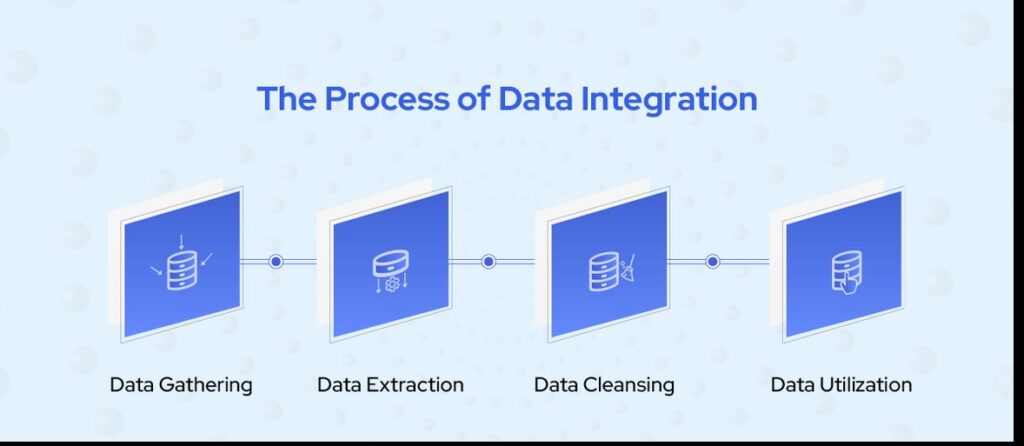
2. APIs and Third-party Tool Support
- The availability of robust APIs and support for third-party tools is essential for extending the functionality of AI and Big Data platforms. This support enables businesses to customize solutions to fit their unique needs, enhancing the overall utility and efficiency of these technologies.
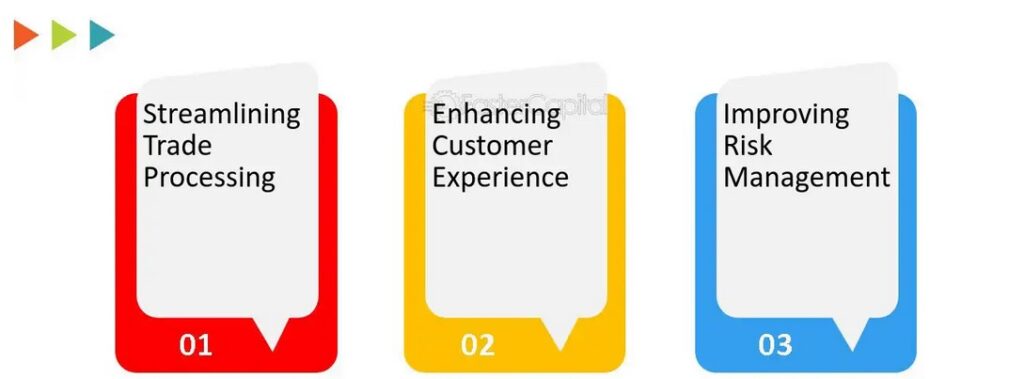
Scalability: AI and Big Data for Business Growth
1. Ability to Grow with Your Business Needs
- AI and Big Data solutions must be scalable to accommodate the growth and evolving needs of a business. This means they should be designed to handle an increasing number of users, more complex operations, and larger data sets without compromising performance.
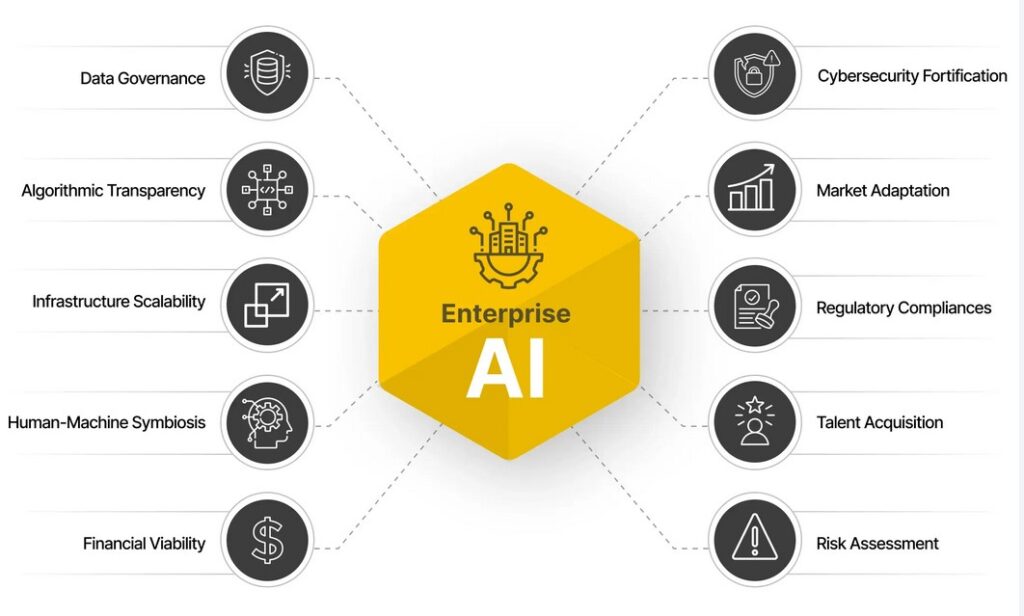
2. Handling of Increasing Data Volume and Complexity
- As businesses grow, so does the volume and complexity of their data. AI and Big Data platforms must be capable of processing and analyzing this data efficiently, ensuring that businesses can continue to derive valuable insights without performance bottlenecks.
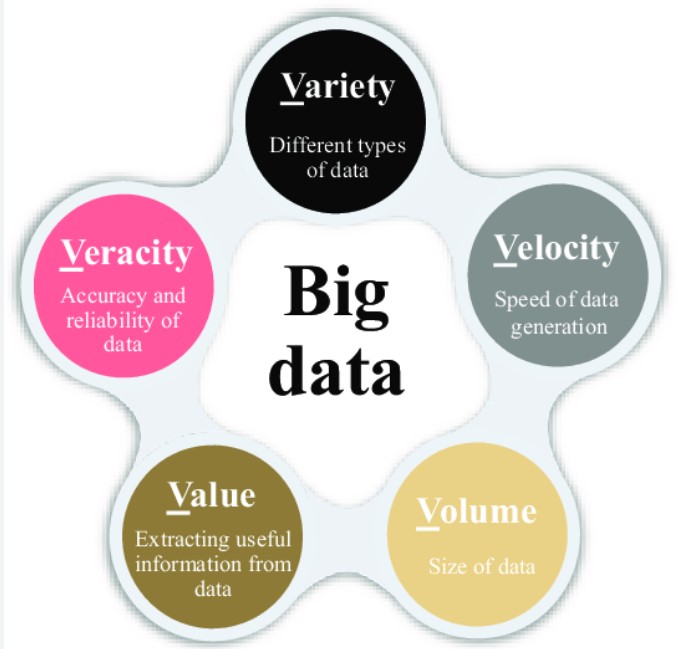
Cost Effectiveness:AI and Big Data for Business Growth
1. Pricing Models (Subscription, One-Time Fee, etc.)
- Subscription-based models offer ongoing access and updates, making them suitable for businesses that prefer continual support and the latest features. One-time fee models may appeal to businesses looking for a fixed, upfront cost without ongoing charges.

2. Return on Investment (ROI) Potential
- The potential ROI from investing in AI and Big Data technologies is a critical consideration for businesses. This involves evaluating how these technologies can streamline operations, reduce costs, and uncover new opportunities for revenue.

Features and Functionality
When discussing the role of AI and Big Data for business growth, it’s crucial to understand the core features and advanced functionalities these technologies offer.
Core Features Relevant to Business Growth
- Data Analytics and Interpretation: The ability to process and analyze vast amounts of data quickly and accurately is fundamental. This includes predictive analytics, customer behavior analysis, and trend identification.
- Automation of Routine Tasks: AI enables the automation of repetitive tasks, freeing up human resources for more strategic activities that contribute to growth.
- Personalized Customer Experiences: Big Data analytics allow for the customization of customer interactions, enhancing satisfaction and loyalty.
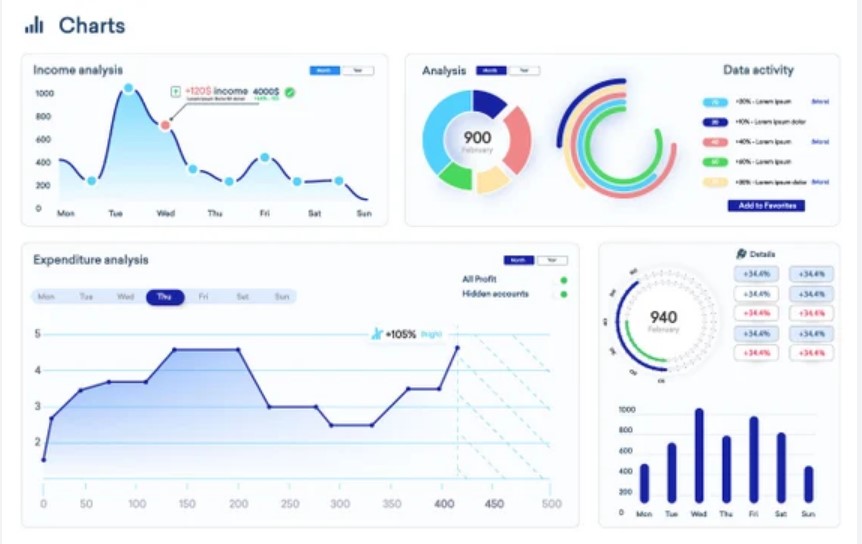
Advanced Features That Set Them Apart
- Machine Learning Models: Advanced AI algorithms that learn and adapt over time, improving the accuracy of predictions and decision-making processes.
- Natural Language Processing (NLP): This allows businesses to analyze customer feedback, conduct sentiment analysis, and automate customer service through chatbots.
- Real-time Data Processing: The ability to process data in real-time enables immediate insights and decisions, a critical advantage in fast-paced markets.
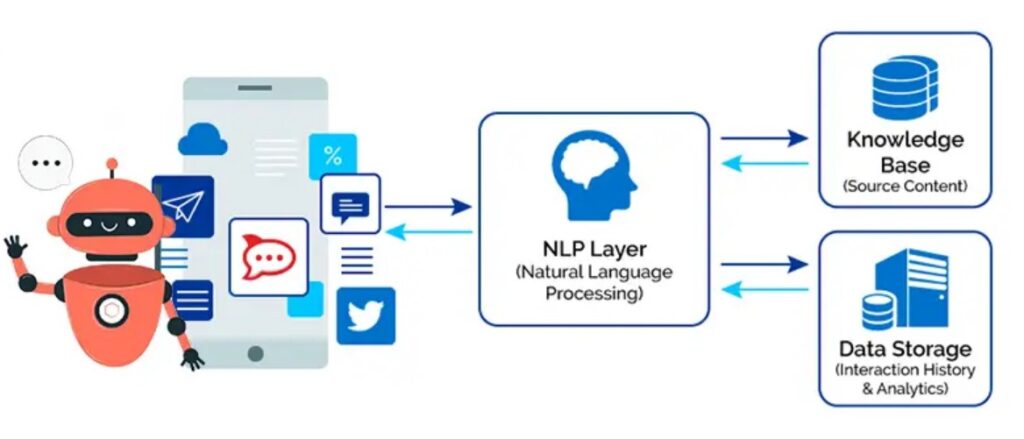
Data Security and Compliance
Security Measures and Compliance with Data Protection Regulations Ensuring the security of data and compliance with regulations such as GDPR and HIPAA is non-negotiable. Features to look for include:
- Encryption: Both at rest and in transit, to protect sensitive information from unauthorized access.
- Access Controls: Ensuring that only authorized personnel have access to certain data sets.
- Audit Trails: Keeping detailed logs of data access and handling activities for compliance purposes.

Customer Support and Resources
Availability and Quality of Customer Support
- 24/7 Support: Access to support at any time ensures that businesses can address issues as they arise, minimizing downtime.
- Multiple Channels: Offering support through various channels (e.g., phone, email, live chat) caters to different preferences and needs.
Availability of Resources for Learning and Troubleshooting
- Guides and Tutorials: Comprehensive documentation helps users understand and maximize the use of AI and Big Data platforms.
- Community Forums: Platforms where users can share insights, ask questions, and learn from each other’s experiences are invaluable.

Real-world Applications and Case Studies
Examples of Successful Implementations
Across industries, the deployment of AI and Big Data for business growth has led to transformative outcomes. From retail optimizing supply chains through predictive analytics to healthcare providers enhancing patient care with AI-driven diagnostics, the real-world applications are vast and varied.
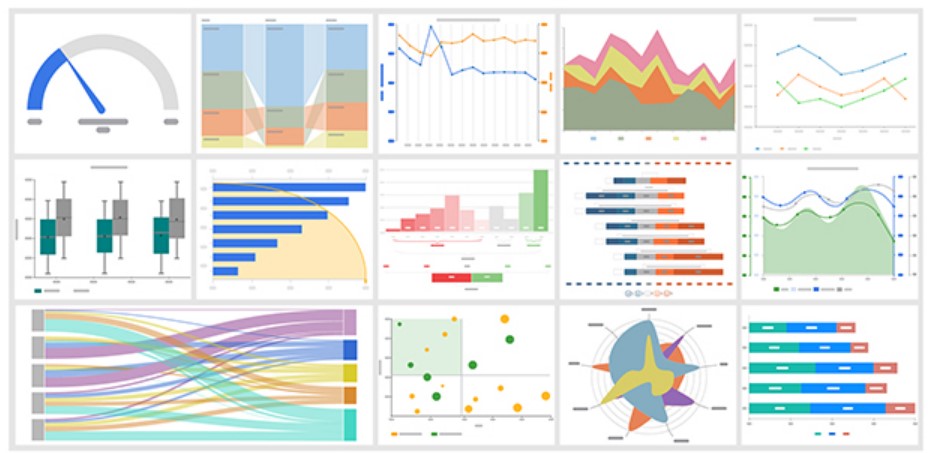
Highlighting specific case studies where businesses have seen measurable improvements in efficiency, customer satisfaction, and profitability can provide readers with a concrete understanding of the potential impact.

Future-proofing:AI and Big Data for Business Growth
Updates and Innovation Roadmap
Discussing the updates and innovation roadmap for AI and Big Data technologies is crucial in demonstrating their long-term value.
Businesses looking to invest want assurance that the solutions they choose are not just relevant today but will continue to evolve.
Detailing upcoming features, enhancements, and shifts in focus towards emerging trends can reassure readers of the commitment to future-proofing.

Adaptability to Future Trends in AI and Big Data
The ability of AI and Big Data solutions to adapt to future trends is a key consideration. As the landscape of technology and business needs change, so too should these solutions. Discussing how current platforms are designed with flexibility and scalability in mind, ready to incorporate next-generation AI capabilities or Big Data sources, underscores their potential for long-term growth.
Decision-Making Guide : AI and Big Data for Business Growth
Summary of Key Factors to Consider
A concise summary of key factors to consider when selecting AI and Big Data solutions can serve as a valuable decision-making guide for businesses.
This might include considerations such as scalability, ease of integration, cost-effectiveness, and the availability of customer support and resources.
Tips on Choosing the Right Tool for Your Business Needs
Offering practical tips on choosing the right AI and Big Data tools for specific business needs can empower readers to make informed decisions.
This could involve assessing current and future data handling capabilities, evaluating the ease of use and learning curve, and understanding the support ecosystem available.
Key Takeaways: AI and Big Data for Business Growth
- AI and Big Data for Business Growth: These technologies have proven their worth across various sectors, demonstrating significant improvements in decision-making, customer experience, and operational efficiency.
- Empowerment through Insight: The ability of AI and Big Data to process and analyze vast amounts of information can transform how businesses approach challenges and opportunities.
- Strategic Implementation:This involves selecting the right tools that align with your business objectives, ensuring data security and compliance, and investing in training and support for your team.
- Continuous Evolution: The field of AI and Big Data is continuously evolving, with new advancements and innovations emerging at a rapid pace. Businesses must remain agile, ready to adopt new technologies and approaches to maintain their competitive edge.
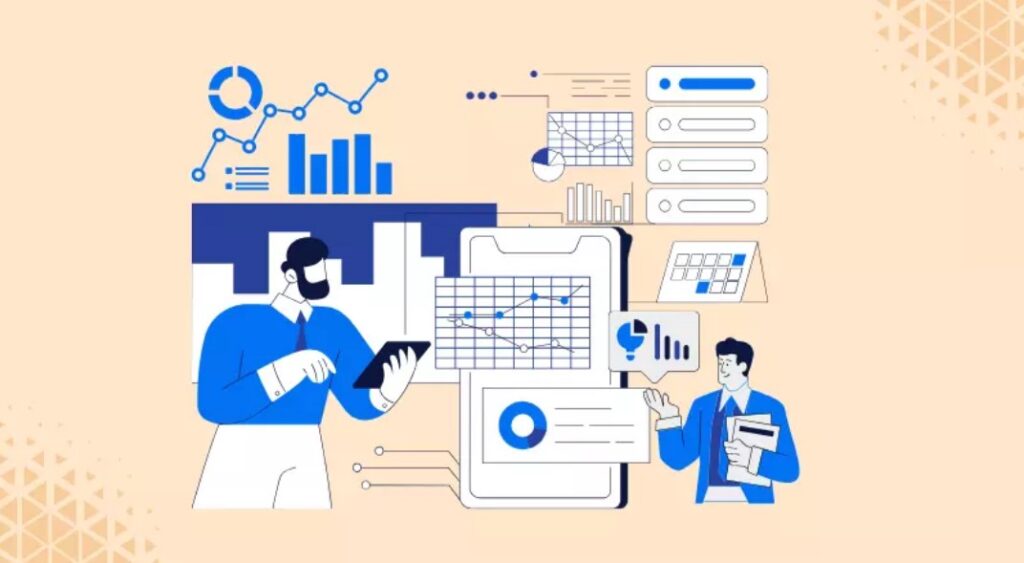
FAQ Section for AI and Big Data for Business Growth
1. What are AI and Big Data, and how do they contribute to business growth?
AI (Artificial Intelligence) and Big Data are technologies that analyze vast amounts of information to uncover insights, trends, and patterns. They contribute to business growth by improving decision-making, enhancing customer experiences, and optimizing operations.
2. Can small businesses benefit from AI and Big Data?
Absolutely. Small businesses can leverage AI and Big Data for business growth by targeting specific areas such as customer segmentation, predictive analytics for sales, and operational efficiencies. These technologies are scalable and can be customized to fit the needs and budgets of smaller enterprises.
3. What are the first steps in integrating AI and Big Data into my business?
The first steps include defining your business objectives, assessing your data infrastructure, and identifying the areas where AI and Big Data can have the most impact. Consulting with a data scientist or an AI specialist can provide guidance tailored to your business needs.
4. How important is data security and compliance when using AI and Big Data?
Data security and compliance are paramount. Businesses must ensure that their use of AI and Big Data adheres to data protection regulations like GDPR in Europe or CCPA in California, to protect customer information and maintain trust.
5. What kind of customer support should I expect from AI and Big Data solution providers?
Quality customer support should include access to technical assistance, troubleshooting, and guidance on best practices for using their tools. Look for providers that offer comprehensive support through various channels like live chat, email, and phone.
6. How does AI and Big Data for business growth handle increasing data volumes?
AI and Big Data solutions are designed to scale with your business. They can handle increasing data volumes by utilizing cloud storage solutions, distributed computing, and efficient data processing algorithms to manage and analyze large datasets effectively.
7. Are there any industries that benefit the most from AI and Big Data?
While AI and Big Data have applications across various sectors, industries such as finance, healthcare, retail, and manufacturing particularly benefit from these technologies. They leverage AI and Big Data for fraud detection, personalized medicine, customer insights, and predictive maintenance, respectively.
8. How can I stay informed about the latest trends in AI and Big Data?
Following industry blogs, attending webinars and conferences, and participating in community forums are great ways to stay updated. Subscribing to newsletters from leading AI and Big Data research organizations can also provide valuable insights.

